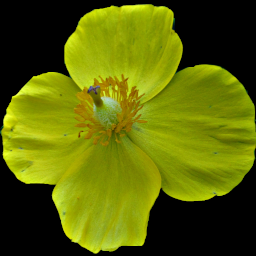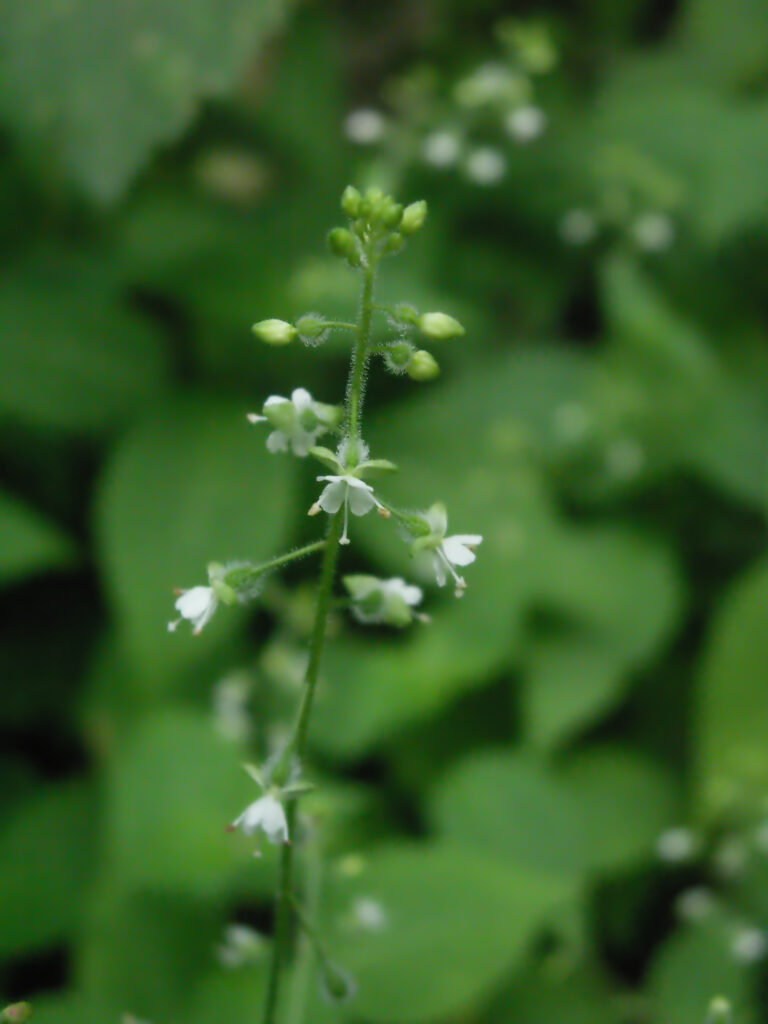
This is either Circaea lutetiana or Circaea canadensis or Circaea lutetiana ssp. canadensis. Some botanists consider the North American populations to be a separate species from the European ones, but others—like the USDA PLANTS Database—put them together as one species, or make the North American ones a subspecies of the European species.
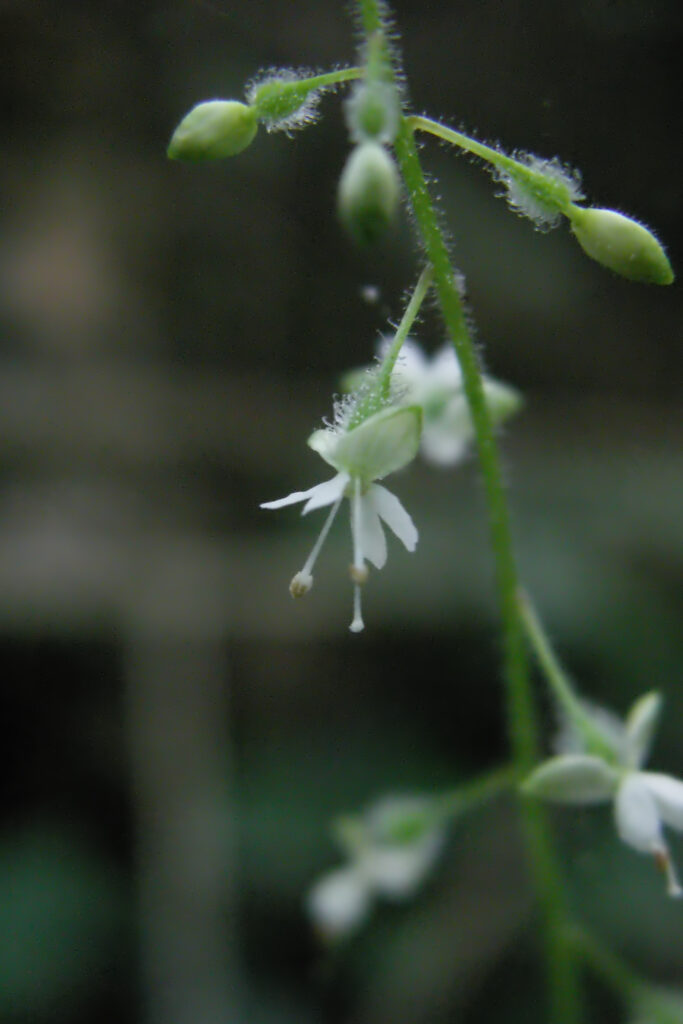
At any rate, it is a charming little flower that can bloom in deep shade. The flowers are tiny, but unusually shaped, and deserve a closer look. The neat habit of the plant makes it suitable for shade gardens, and it is becoming popular among native-plant enthusiasts.
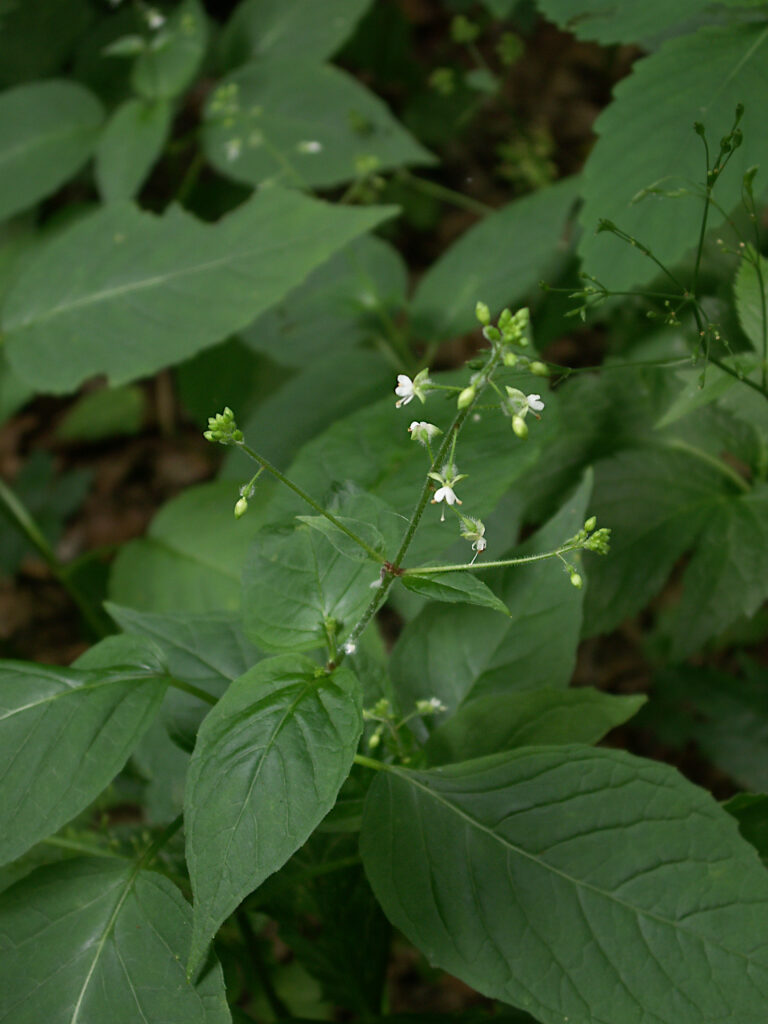
These plants were photographed in Bird Park, Mount Lebanon, where the species is abundant.
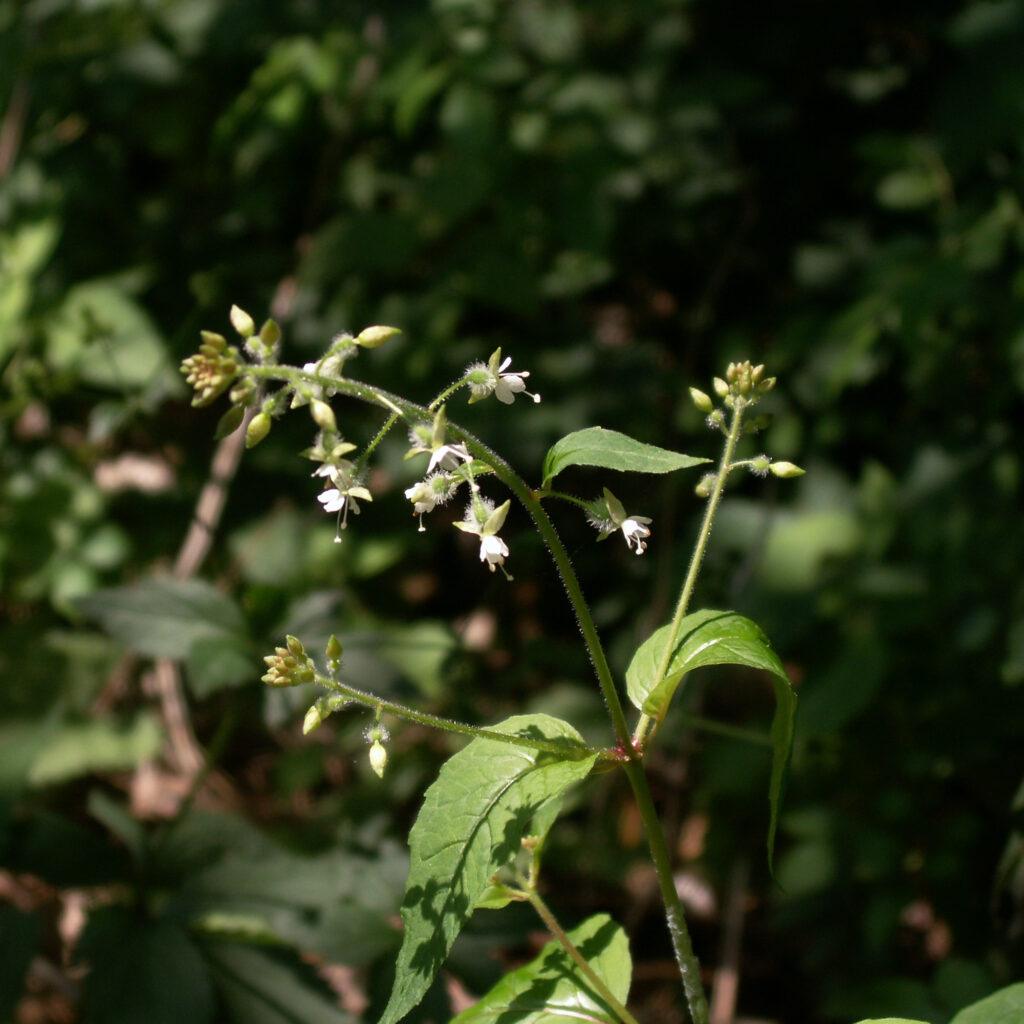
For a description of the species, see the Circaea lutetiana reference page.

